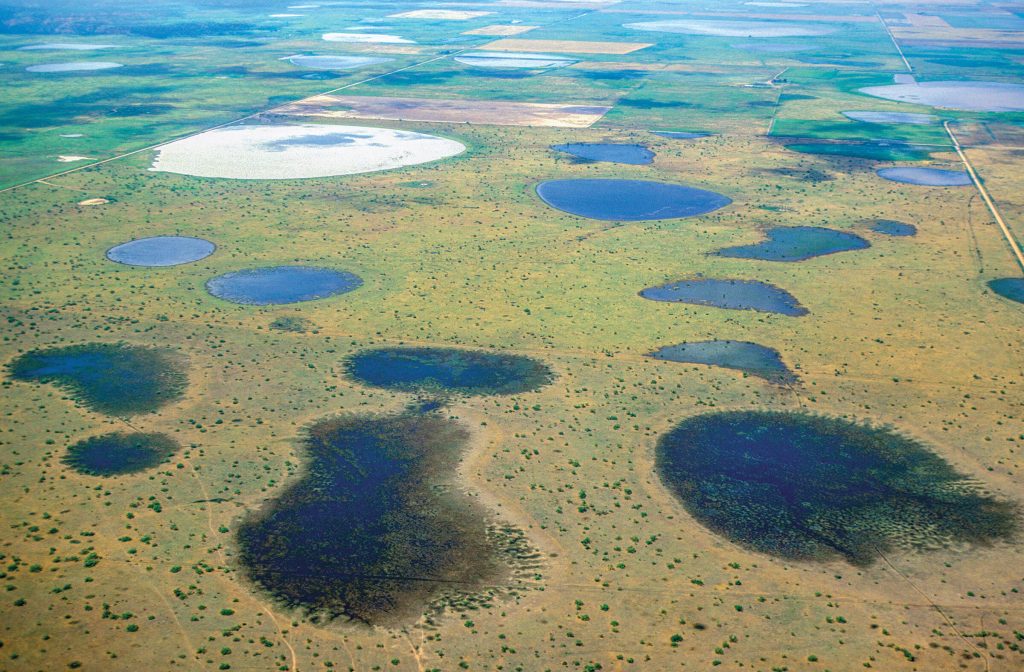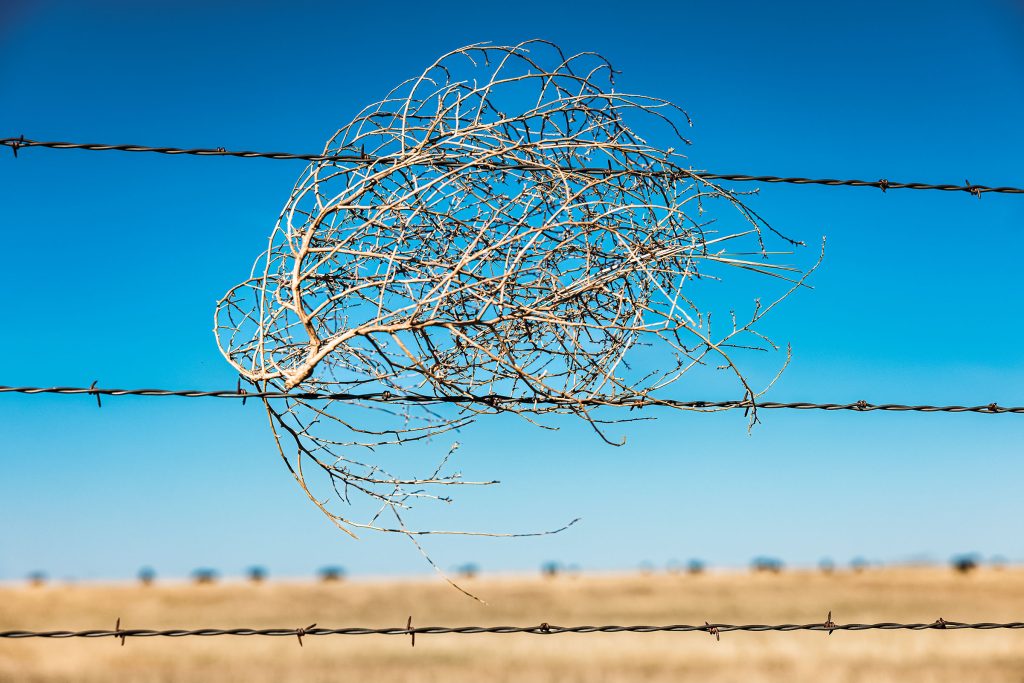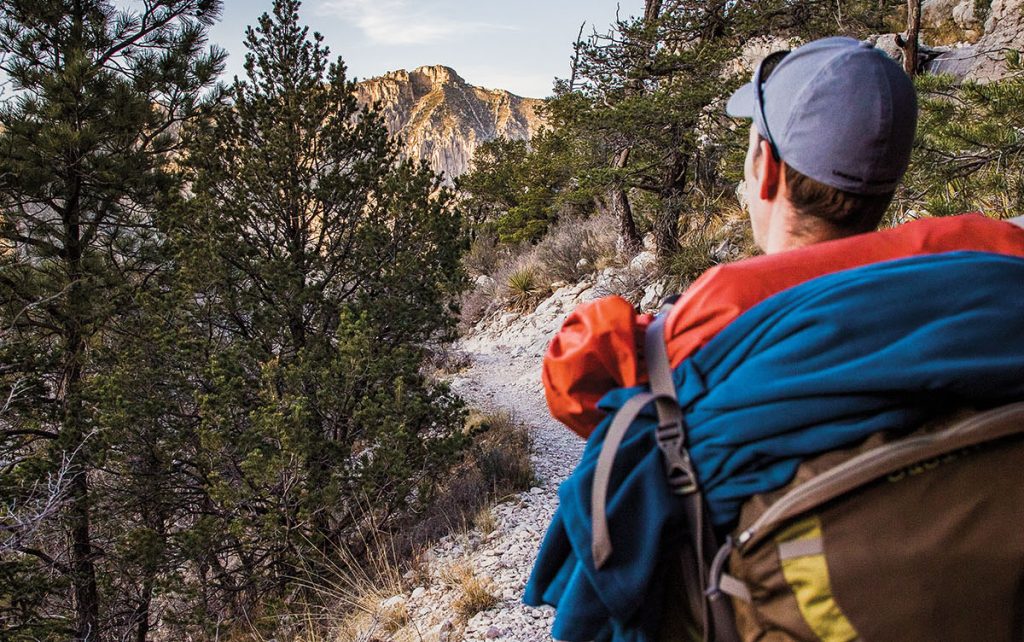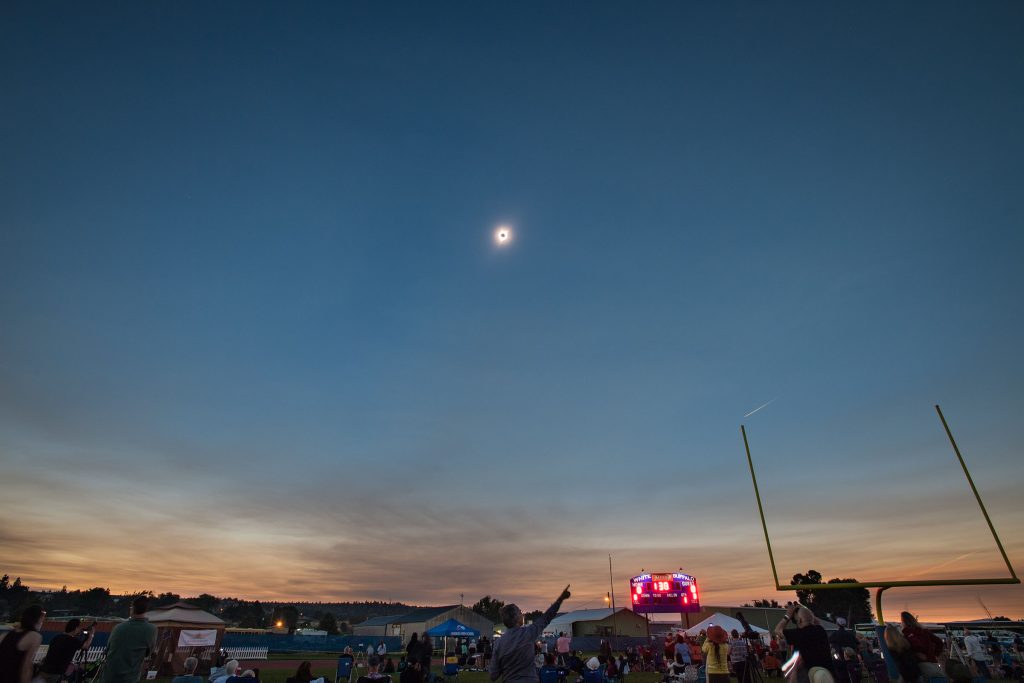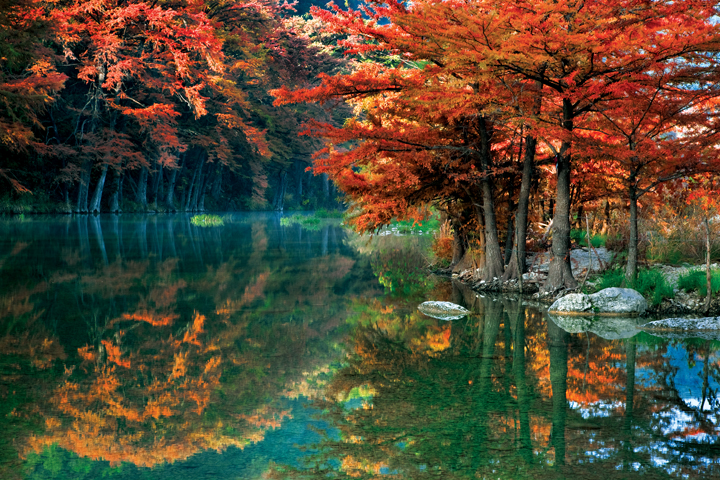
A glassy Frio River mirrors coppery cypress just below Garner State Park. (Photo by Charles Carlson)
I drove into Caprock Canyons State Park for the first time on a crisp fall day. The park straddles a line where the Southern Plains meet Caprock Escarpment, and about a quarter-mile past the gate, the ground suddenly drops away. Long, narrow canyons stretch like claw marks through tawny sand and red rocks, their slopes splashed with dark green juniper, the sparkling streams below edged with yellow cottonwoods, wild plums, and hackberries. Until that day, I had no idea that Texas contained such a perfect fall palette.
The color and intensity of our fall displays depend on various conditions, says Joe Marcus, collections manager at the University of Texas’ Lady Bird Johnson Wildflower Center.
Besides the right species of trees, you need favorable temperatures and rainfall throughout the previous year. A little less rain in spring, say, or an early fall freeze can make a big difference, for good or bad. That makes fall kind of hit-or-miss in Texas, adds Dr. Hans Williams, associate dean of the Arthur Temple College of Forestry and Agriculture at Stephen F. Austin State University. “You have to get that just-right combination of conditions, and our fall nights tend to be warm and our weather relatively dry, while cool nights and moist soil are best for fall color.”
But considering Texas’ size, in any given year favorable conditions exist somewhere in the state, whether for buttery cottonwoods and rosy sumacs out west, the Hill Country’s fiery oaks and maples, or deep red tupelo and sweetgum in our eastern reaches. Here are our picks for this fall.
Panhandle Parks
Up to 20 miles wide and 120 miles long, Palo Duro Canyon splits the Southern High Plains, or Llano Estacado. Shortgrass prairie covers its rim, while 800 feet below, the moister canyon floor supports a variety of plants, including sumac, mesquite, cottonwood, willow, and juniper trees. Palo Duro Canyon State Park trails and resources manager Mark Hassell sends visitors to the Chinaberry Day Use Area and along the one-mile, meandering Paseo Del Rio trail along the river to find fall color. “Western soapberry turns a pretty, bright yellow,” he says “and sumacs throughout the park turn red.” Cottonwood trees create a river of gold along the canyon floor, best viewed from pull-outs on the trip down from the rim. Peak color usually happens mid- to late-October, Hassell says.
Some 80 miles southeast, Caprock Canyons State Park’s 15,000-plus acres range from sparse badlands with mesquite and juniper to bottomlands populated by wild plums, hackberries, and cottonwoods. The latter trees line the streams and forks of the Red River that carved these canyons, and their beautiful fall colors can be enjoyed from many spots, says park superintendent Donald Beard. Almost 90 miles of trails for hiking, biking, and horseback riding crisscross the rugged terrain, each trek a bit different. The easy and accessible Canyon Rim Trail, an out-and-back hike up to three miles long, offers great views of a deep canyon full of trees. Those seeking a bigger challenge can hit the rugged, 7.5-mile Upper Canyon Trail. Beard suggests mid- to late-November is the best bet for peak color.
Leakey and Garner State Park
Autumnal adventures await in the land around Leakey, with hills rising up to 2,400 feet raked by deep canyons carved by the Nueces, Frio, and Sabinal rivers. The natural beauty of this southwestern edge of the Edwards Plateau attracts folks in all seasons (TH highlighted the area for spring wildflowers in April 2010), but fall can be spectacular here. Head just about any direction, says Michael Eason, conservation program coordinator with the Wildflower Center, and you’ll run into fall photo opportunities. Ranch Road 337, which crests a ridge between Leakey and Camp Wood, ranks as one of the most scenic drives in the state year round; stop at the scenic overlook a few miles outside Leakey to gawk at flame-splashed hillsides. Or, drive north on US 83 toward Junction and take advantage of the views from every rest stop. Trees to thank for the awesome color include appropriately named flameleaf sumac and Texas red oak (also known as Spanish oak), Southern red oak, black cherry, bald cypress, Texas walnut, and sycamore.
Nine miles south of Leakey on US 83, Garner State Park enjoys renown as a summer destination, drawing throngs with the Frio River and nightly dances at the pavilion. But fall visitors enjoy cool temperatures, smaller crowds, and impressive foliage, according to interpretive specialist Frank Roberts. Canyons angled southeast to northwest capture cooling moisture from southeast prevailing winds to create richly diverse vegetation, including abundant trees such as mesquite, Texas redbud, bald cypress, western ashe juniper, pecan, Spanish oak, and Lacey oak (also known as Texas blue oak). The oaks, says Roberts, color up nicely when conditions are right, especially on north-facing slopes in the middle of the park. Cypress trees along the river can turn deep bronze, a photo-worthy contrast to the Frio’s deep-green waters. Peak foliage conditions here tend to occur around Thanksgiving and a few weeks afterward.
Caddo Lake State Park
A maze of sloughs and bayous creates nearly 27,000 acres of cypress swamp in the northeast corner of Texas at its border with Louisiana. Caddo Lake State Park occupies the shore of Saw Mill Pond off Big Cypress Bayou, which leads to Caddo Lake. Leaves on the stately cypress trees, some of them more than 400 years old, turn shades of copper and bronze in certain fall conditions. Some of the best color is down by the bayou, says park resource specialist Chuck Hubbard, where, in addition to cypress, abundant oaks, sweet gums, and maples paint the landscape.
Rent a canoe and glide through this watery wonderland to enjoy the trees and their reflection on the glassy water. The park also has two-and-a-half miles of hiking trails winding from bottomland hardwood to ridge tops, with color from maples, oaks, and hickory. The park is usually most photogenic from the last week of October through the third week of November, according to Hubbard.
The lake contains 71 species of fish, and if you can take your eyes off the trees, you may spot an alligator, mink, or beaver. Campsites, screened shelters, and cabins are available for overnight stays.
Nacogdoches
With more than 600,000 acres of national forest land, Deep East Texas is known for trees. It stands to reason, then, that one would find fall color around Nacogdoches, which sits amid hundreds of square miles of towering trees and rolling hills. Local horticulturist Jeff Abt recommends driving Texas 21 east to San Augustine, or west to Alto for a good dose of fall. The Carl Monk Scenic Overlook, nine miles east of the loop on Texas 7 toward Center, overlooks a good show. In fact, just about any road in any direction out of Nacogdoches takes you through woods painted by sweet gum, Southern sugar or Florida maple, black gum, hickory, beech, honey locust, and dogwood.
For less driving and more sit-and-pondering, visit Stephen F. Austin State University’s 10-acre Mast Arboretum on Lanana Creek. More than 200 different varieties of Japanese maples blaze in hues of yellow, red, and purple, accompanied by color from Mexican sugar maples, black walnut, and azaleas. At the school’s Pineywoods Native Plant Center, 40 acres on the north end of campus, hackberry, redbud, Florida maple, and hickory cover the yellow spectrum. These facilities all have accessible walking paths and ample benches from which to enjoy the show. For best results, visit the Nacogdoches area in mid- to late-November.
